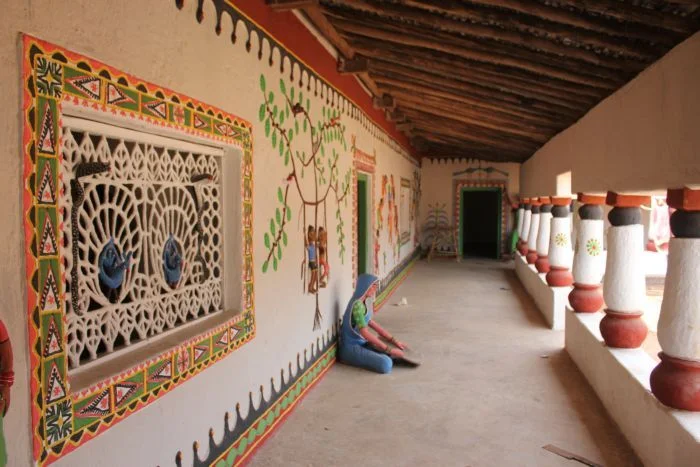This wonderful story revolves around a woman from the small village of Puhputra in the district of Sarguja, Chhattisgarh, India who brought life to yet another form of art which people now recognize as ‘Sonabai Art.’ Unlike most other folk arts, this one has its soul in Sonabai Rajawar and her courageous fight against all odds.
Sonabai Art is an art that captures the whole idea of how a woman, irrespective of her tragic life, made her world a colourful and a happy one. Today her creations have gone beyond the confines of her village, her arts are famous nationally, and even internationally.
This blog enlightens about how Sonabai created this art, the evolution of this art form, tools and other material used in creating this art, and its effects on Indian art and appreciated as folk art in the entire world.
The Life of Sonabai Rajawar:
He has survived even the worst form of divorce that could threaten any man’s life.
Sonabai Rajawar was born in 1930 and was a village woman having an extra-ordinary life in the village named Puhputra of Sarguja district in Chhattisgarh. She modified her life when she was young and married for she was taken to a family where she experienced he severe seclusion.
Her husband like any traditional husband of his time locked her up in the house, and hardly allowed her to move around the outside world even with the neighbours or other women from the village.
This isolation which would have perhaps snapped the spirit of any one became the very seed bed for the growth of Sonabai’s imagination and creativity. Being unable to interact with society or communicate herself, she began the only occupation which could not be depriving her – creating. Sonabai had a place to belong and she started painting the mud walls in manner that had not been done before.
Her loneliness became the birthplace of a new type of artistry, one which was born without experience, without even awareness of other art forms, shaping clay, painting vivid images in sculpture form and painting various patterns and shapes on the walls of her house. It is from these small incidents that Normandy’s Sonabai Art came to be.
The Origins of Sonabai Art:
The organising conceit of a Solo Revolution thus encompasses avant-gardist tendencies of an artistic sort, as well as hyper-productivities associated with neoliberal work-isms and the post-Fordist condition.
It was perhaps this scenario that made art a natural part of Sonabai’s life and which emerged out of her need to communicate in the limited context in which she existed. Her first figures focused on sculpture as she shaped them using her hands from clay materials.
Depending on the indigenous technologies of ‘Earth, Clay and Natural Pigments,’ she broke away the drudgery of her physical reality and started painting her environment alive with figures, animals, birds and plants. That is why doorstep, the walls or the ceilings turned into canvases for her imagination during several years.
Sonabai was quite unique and her sculptures were fun and had a very flamboyant feel to them most of the time. Women came up with rich in detail vivid reliefs, the scenes of everyday life, funny animals, and abundant vegetation painted in naïve and loud tones. Her figures were fine Sicilian caricatures, some of its members rounded and curvy and others stretching like ribbons and with tender, almost dozy faces. It has been said that Sonabai’s art was free from external inputs or any forms of directions and in this sense her art was very raw and real and totally free from any influence from any works of art.
She also started to practice how to make some real differentiations for latticed windows and other constructions of architecture from clay. These lattices also opened her home to light and air in the most beautifully designed patterns introducing a new element to the home. Every nook and crevice of her entire house, turn into a living gallery with color and designs pervading all its spaces.
Techniques and Materials:
Innovation means to make something new and bring change; it is quite simple in its concept.
The most impressive thing in Sonabai Art is that this work can be described as minimalist in the method of manufacturing and, at the same time, maximalist in terms of the creativity in this activity. The object details most probably depict that Sonabai Art used locally available items which included earth, water, straw, bamboo, and natural colors. The clay she used was the common red clay which was available around her and for the black colourant she used ashes and for the red colour she used ochre extracted from plants or rocks.
Her approach was quite uncomplex and yet original and masterful. First, she would mix the clay with water to reduce its hardness ad make it soft enough to mould. Then the figures were continue to be modelled by her hands, sometimes without using any tools at all. Its notable that her style is very smooth and is characterized by curves that are free from any sharp lines that are frequently associated with stone cutting instruments that are widely used in the process of the formation of materials. When erecting the sculptures, they were shaped by molding the clay into a required design, allowed to solidify and then molded further and painted in bright colors using natural dyes.
The two, the naturalistic representation and the geometric designs on beautiful latticed windows and patterned sculptures are beautiful representations of Sonabai’s creativity. She did not design these architectural features to simply beautify her home or for her to just look at but to physically incorporate light and air into her home and at the same time, shift and change the patterns of the lighting in the house as the day progresses.
Most conspicuous in the oeuvre she created in an enclosed environment, with no contact with other artists is the cunning and creativity she applied. Thus, Sonabai’s work appeared from the inside only, which proves the potential of creative imagination even when the painter is practically in confinement.
Sonabai Art Themes and Symbolism:
Thus, the essence of Sonabai’s art can be described as the representation of rural life, nature and the feeling of oneness with the world. Many of her artworks are simple and filled with joy, women dancing while men working and children has fun. Birds, animal and tree is often used as motifs depicting her freedom and relationship with the world of nature that was around her lonely life.
In her work she uses the unrealistic body proportions and smooth sinuous lines which are rather resemble the fairy tales. Her work is filled with some sense of movement and rhythm in the characters that are either happy or celebrating something. This is quite poignant when one considers the circumstances of Sonabai’s life; her paintings are full of the energy of life despite having being painted in a cage, literally.
The only aspect which can be termed as a drawback in her work is the complete lack of religious or mythological motifs which are popular in vast majority of other traditions of Indian folk art. The artistic creations of Sonabai are autobiographic and non religious, they depict human emotions and the physical world. This of course differentiates her work from many other rural art forms of India thus making it have a voice of its own.
The Discovery and Recognition of Art of Sonabai:
It is only for several decades that people got to know about Sonabai and her work that was initially limited to her home in Puhputra only. She came into light only in the eighties when art historian Jyotindra Jain was looking for the tribal and folk art of central India. Jain was impressed by the uniqueness and the aesthetics of Sonabai’s paintings, so he started to photograph them.
Thus with the help of Jain, Sonabai’s art got the recognition at national and international level. Major galleries and museums of India got acquainted with her work; she has been awarded President’s Award for craftsmanship. They also exposed her work at other places in the world such as at the Smithsonian Institution in Washington.
Legacy and Influence: The Long Term Legacy of Art Made by Sonabai:
Unfortunately, Sonabai Rajawar passed away in the year 2007 but still, her work and impact to the cultural practices of India is still being felt to date. Work has inspired the artists of her region and also from other regions across the world. At her village of Puhputra many women have followed her techniques and learning from her and are following the tradition of Sonabai Art to the generations to come.
Sonabai’s art is also there in Contemporary Indian art & design elements, from walls to interiors, fashion etc. Their abundance and the use of natural materials and bright colors, the preoccupation with the forms of organic origin have appealed to artists and designers seeking to popularize the trends of folk art in contemporary interiors.
She has also developed the representation of women in Indian folk art; Sonabai’s work is inspiring as it demonstrates the power of women’s creativity In unfavorable conditions. Thus, her art has most often represented the power of women especially from the rural regions which in most cases are so restricted by social and cultural barriers.
Preservation and Promotion of Sonabai Art:
In recent years, there have been efforts to preserve and promote Sonabai Art, both within India and internationally. Museums and cultural institutions have documented her work extensively, ensuring that future generations can appreciate her contributions to Indian folk art. Workshops and training programs have been established in Sarguja and neighboring regions to teach Sonabai’s techniques to new generations of artists.The Indian government and various non-governmental organizations have also worked to promote Sonabai Art as part of India’s rich cultural heritage. Exhibitions, publications, and documentaries have helped bring her work to a wider audience, ensuring that her legacy continues to inspire.
Conclusion: The Unstoppable Spirit of Creativity:
The story of Sonabai Art is not just about a new form of folk art; it is a testament to the human capacity for creativity, resilience, and self-expression. In the face of isolation and adversity, Sonabai Rajawar created a world of beauty and joy, using the simplest of materials and the deepest reserves of her imagination. Her art, born in the small village of Puhputra, has touched the hearts of people around the world, transcending cultural and geographical boundaries.
Sonabai’s life and work remind us that creativity can emerge from even the most difficult circumstances, and that art has the power to connect us to our innermost selves. Today, Sonabai Art stands as a symbol of hope, resilience, and the enduring power of the human spirit.
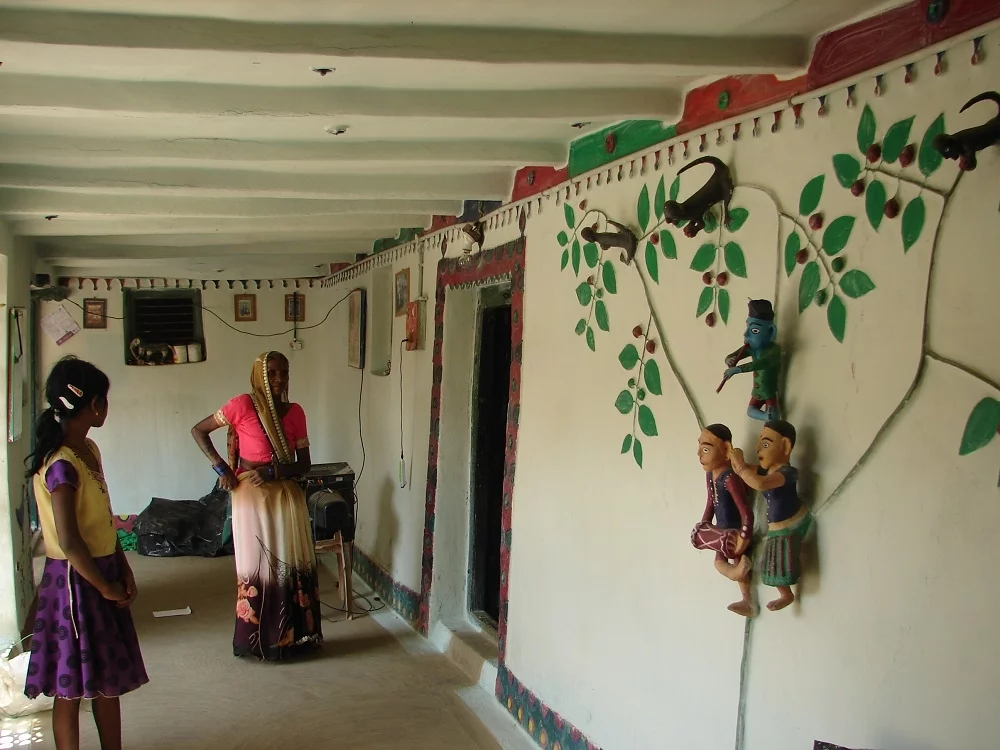
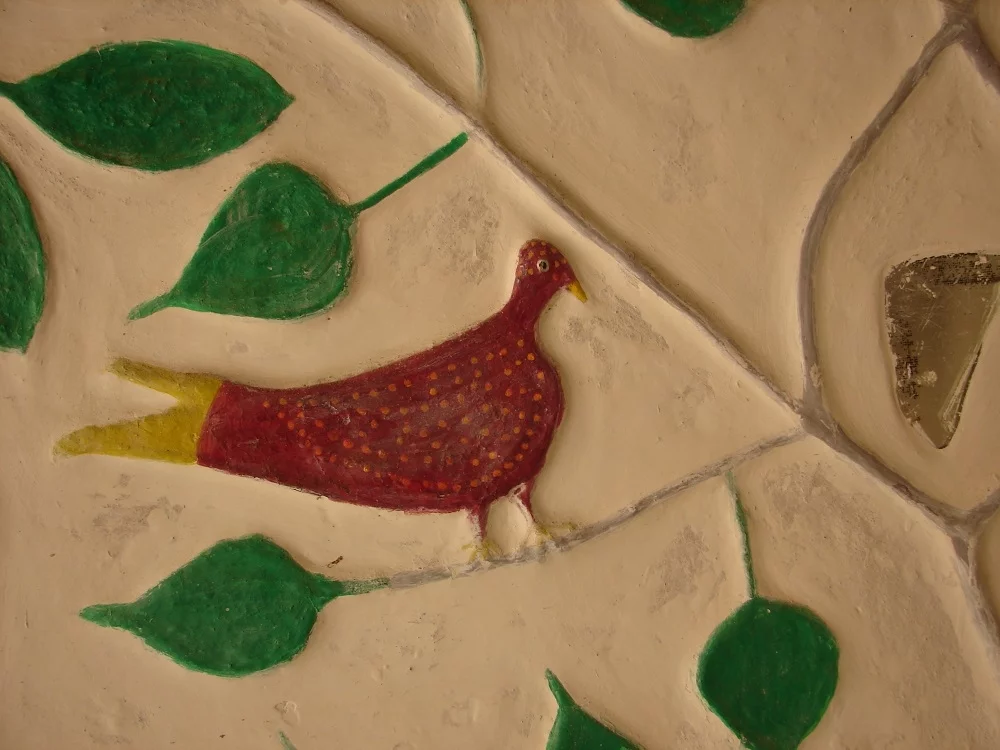
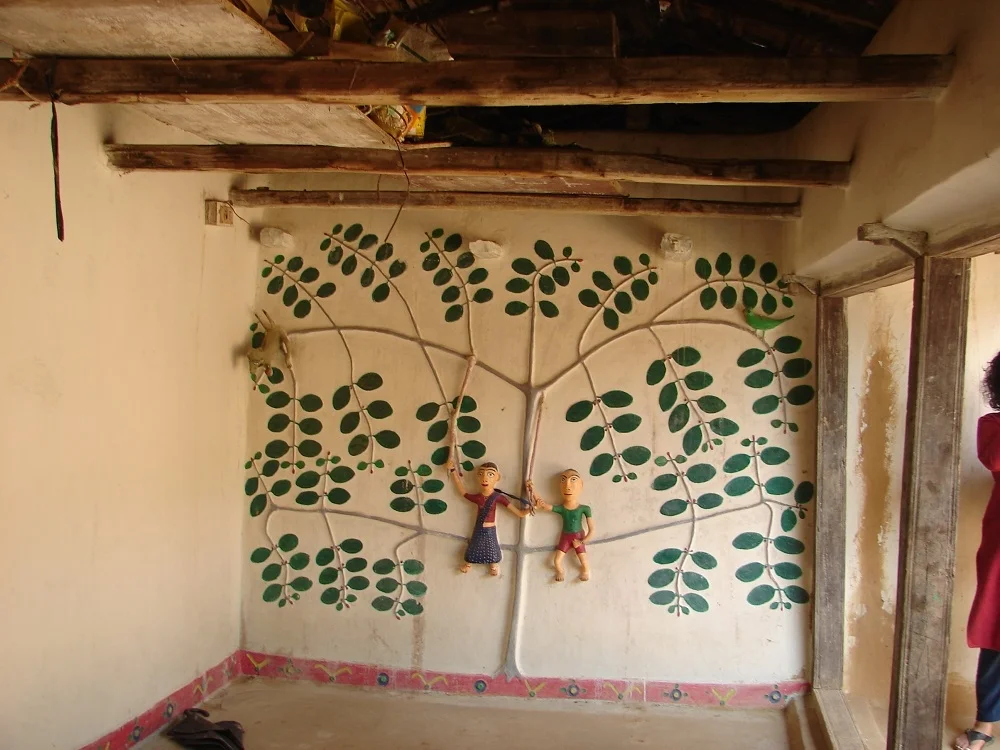
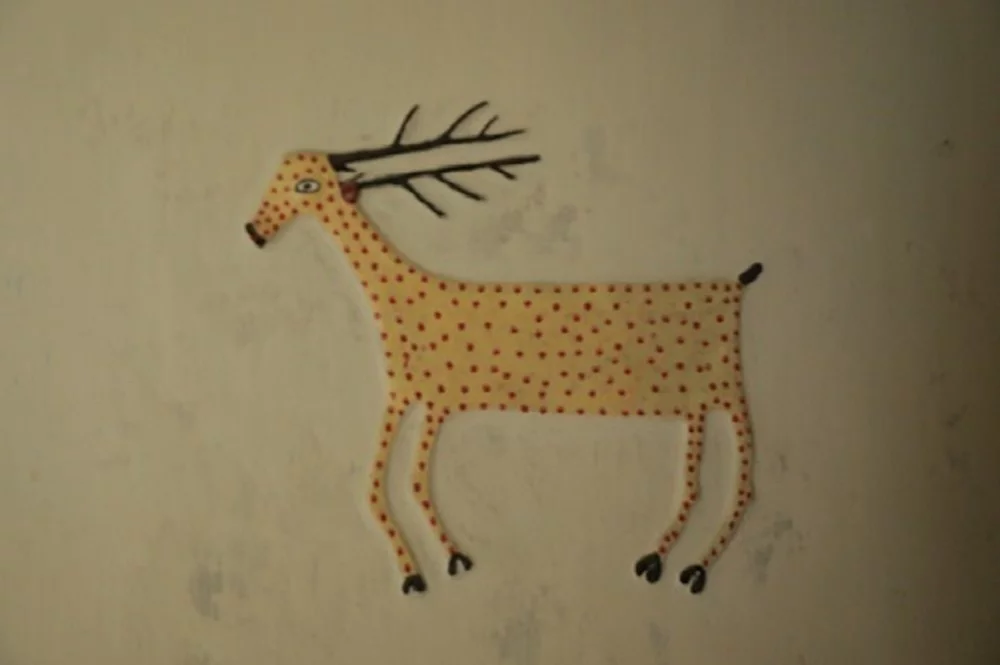
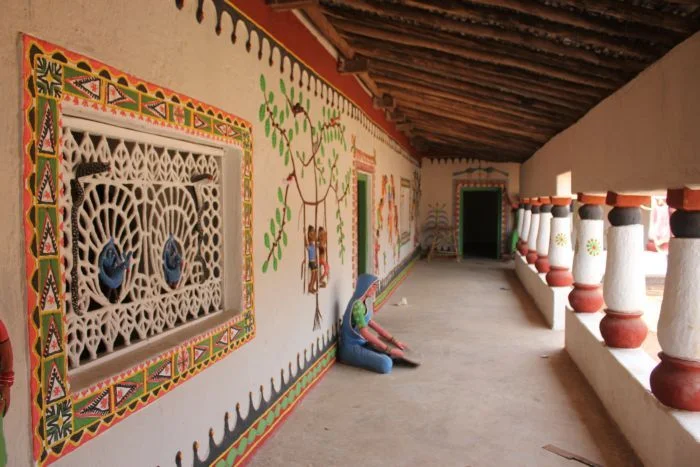
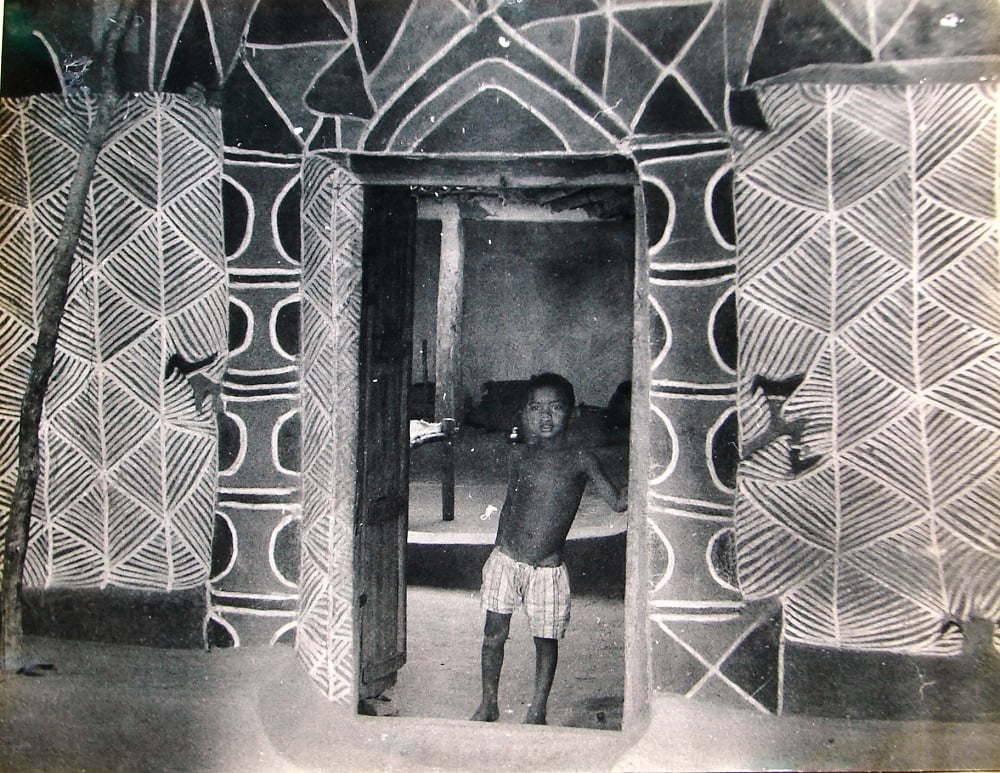
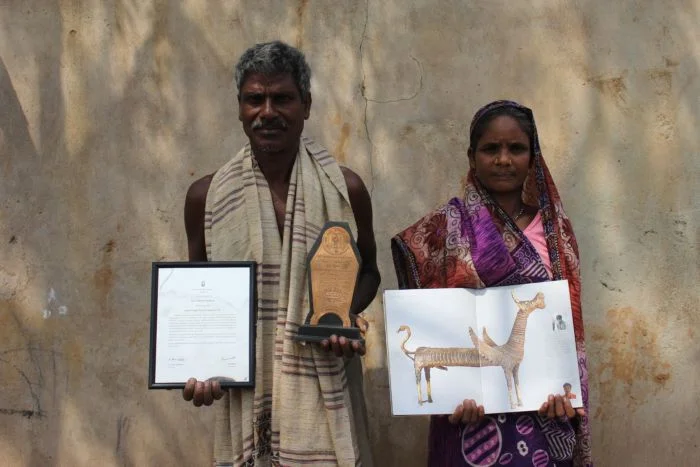
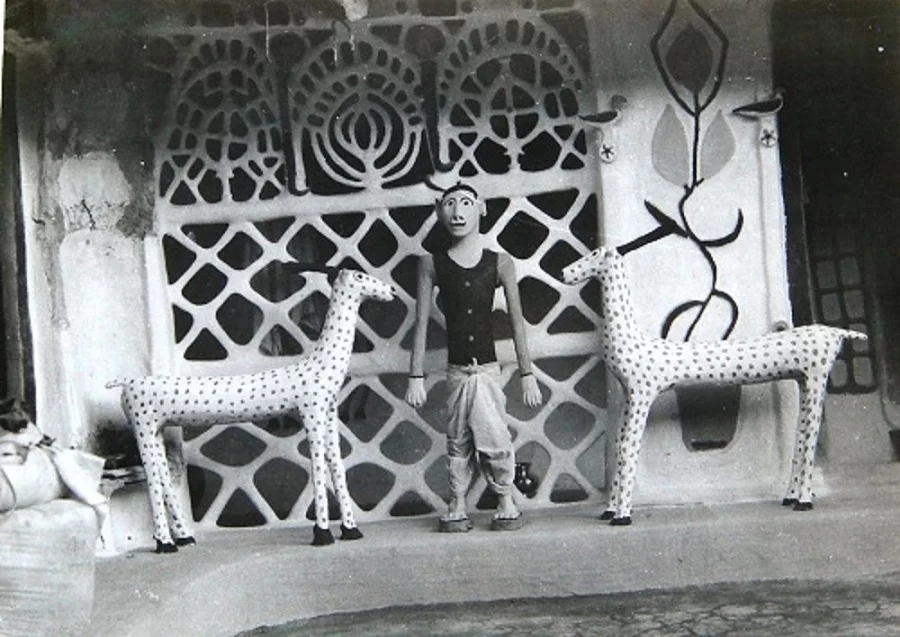
Photos By: sahapedia.org
Explore more about Sarguja

